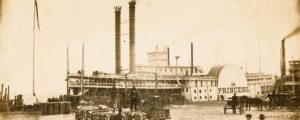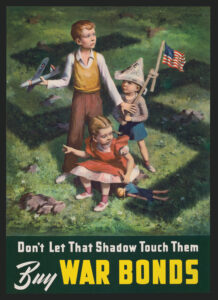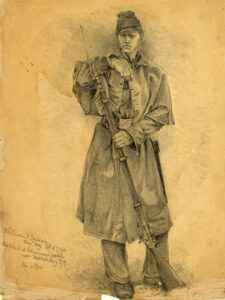The Devil’s Own Work: The Civil War Draft Riots and the Fight to Reconstruct America
By Barnet Schecter (Walker & Company,New York, 2005, $28)
The most violent urban uprising in American history occurred in July 1863, when thousands of poor workers took to the New York’s streets with bricks,torches and clubs to protest the military draft and its $300 exemption provision. After four days of turmoil, the riots were finally suppressed, though their influence reverberated for decades.
Barnet Schecter’s The Devil’s Own Work: The Civil War Draft Riots and the Fight to Reconstruct America portrays the riots as crucial events in two extended,violence-laced movements, the struggle for abolition and racial equality, and the sometimes intersecting movement for labor reform. The racial theme dominates the book.By dating the onset of Reconstruction from the issuance of the Emancipation Proclamation, Schecter argues that the riots were the first chapter in the contest between radicals and reformers committed to racial equality against conservative and reactionary forces whose object was to limit the effects of emancipation and impose a nationwide racial caste system.
Home to a variegated black population, which included workers,middle class professionals and clerical leadership,antebellum New York was also headquarters of the country’s largest abolitionist organization,the American Anti-Slavery Society.The city’s social and economic elite were strongly imbued with abolitionist sentiment while largely disdainful of an Irish Catholic working class. The Irish were welcomed and organized by the New York City Democratic machine, Tammany Hall, which was strongly pro-Southern and anti-abolitionist.
Fort Sumter and Lincoln’s call for volunteers temporarily banked the fires of racial and political animosity. But growing casualty lists, including heavy losses in the Irish Brigade,led to increasing disenchantment in the Irish working class slums.The Emancipation Proclamation and the implementation of the draft, with its bitterly resented exemptions for men who could find a substitute or come up with a $300 commutation fee, further inflamed the poor workers’neighborhoods.The volatile mix finally exploded on July 13, when mobs, stoked by Copperhead agitators, torched the draft office.
Schecter’s coverage of the riots is gripping.He makes excellent use of both official sources and private memoirs,including those of both blacks and Quaker abolitionists.
The rioters tended to attack uptown draft offices and homes of abolitionists or Republicans. In the downtown areas the mobs torched black churches and businesses,while individual blacks were beaten and lynched.On the fourth day of the riot, New York’s militia units and some Federal regiments returned from Pennsylvania to douse the riots via a liberal application of their firepower. Though the official death total was 105 killed,Schecter—pointing to the heavy use of musketry and even cannons—persuasively argues that about 500 were killed, mostly rioters.
Many city merchants attempted to provide aid for blacks made homeless,injured or orphaned by the violence.City officials, in contrast, discriminated against blacks filing claims for losses, while Tammany judges handed out the lightest sentences to those charged with crimes during the outbreak. In the meantime, William Marcy Tweed, later famous as “Boss Tweed,” organized a Substitute Committee that raised money to pay the $300 exemption fee for anyone who did not want to be drafted.In the end, few New Yorkers were brought into the Army through conscription.
The remainder of the book deals with Reconstruction,emphasizing its New York connections such as the 1868 Democratic convention held at Tammany Hall and the nomination of New York governor Samuel Tilden as the Democratic candidate for president.The long shadow of the draft riots could be seen through the violence of the Ku Klux Klan,White Leagues and Red Shirts, who desired white supremacy.
Schecter concludes by following Reconstruction’s collapse following the 1876 election. The Devil’s Own Work provides a solid overview of racial politics from the antebellum period to 1877.Schecter’s narration and analysis of the course and effects of the draft riots is especially well told.The secondary theme of intertwined industrial conflict gets less attention, and the connection between the two disappears at times,possibly because it is simply too much information to control,possibly because race and labor issues did not always converge. Similar attempts to link the draft riots directly to Reconstruction sometimes seem strained.Additionally,the chapters dealing with the pre- and post war period rely almost exclusively on secondary material, especially the work of James McPherson. Readers familiar with current trends in Reconstruction will find Schecter’s rendition highly familiar.
There are a few basic errors that someone should have caught (e.g.,Andrew Jackson was not a “planter from Kentucky”— he was from Tennessee, and Theodore Roosevelt’s father was Theodore Roosevelt, Sr., not Robert Roosevelt).
Those reservations aside,The Devil’s Own Work is a useful and readable contribution to Civil War literature.The exploration of the riots themselves is thorough and wellresearched,and the antebellum and Reconstruction aspects give the reader an excellent synthesis of modern scholarship and interpretations of those watershed events.
Originally published in the January 2007 issue of America’s Civil War. To subscribe, click here.




